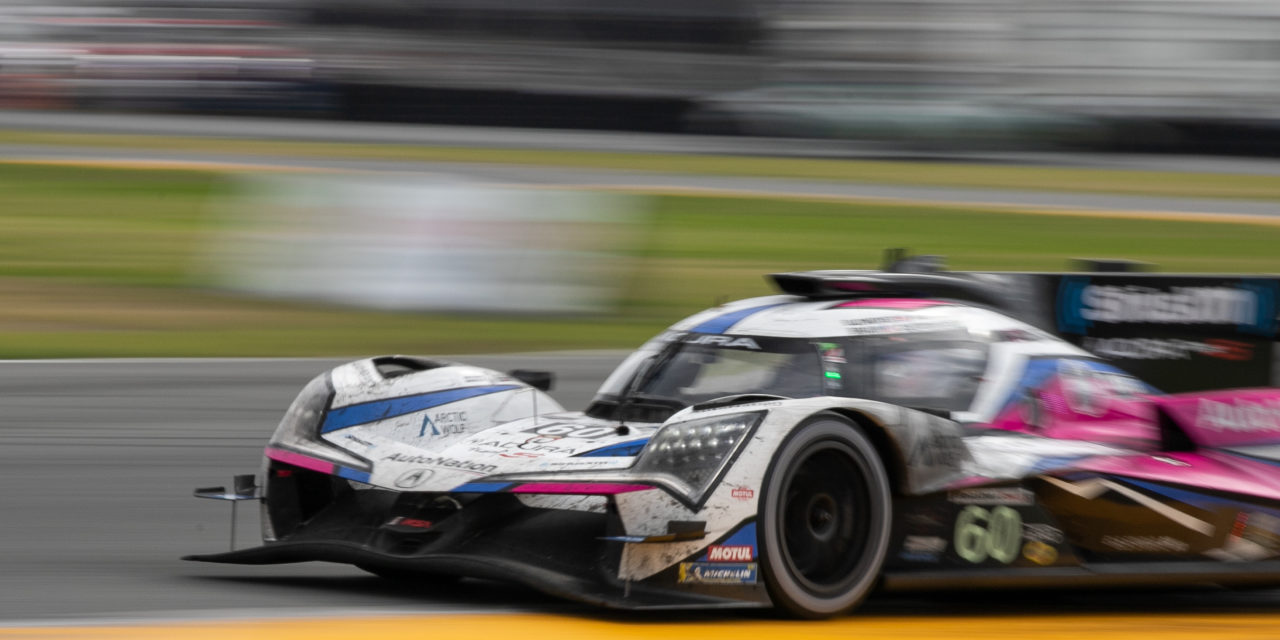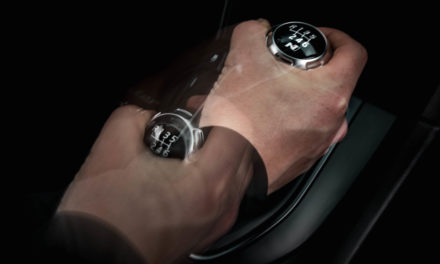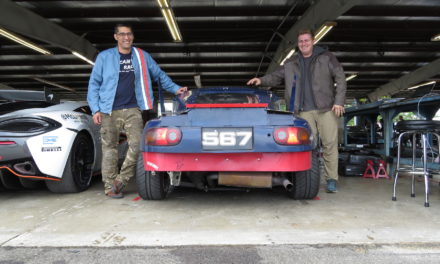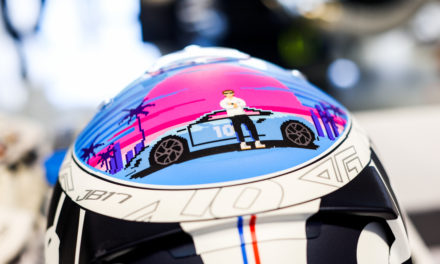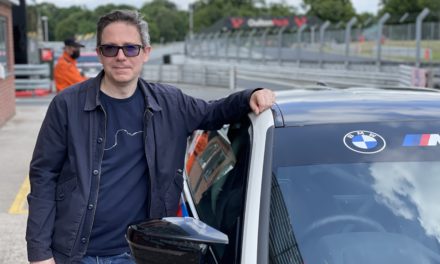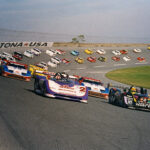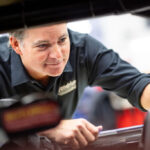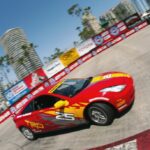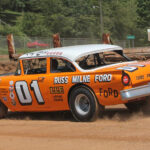Writing, wrenching, racing, or photography—I can’t help myself—I engage with the car hobby in any way I can. I find more success in some activities than others, but that doesn’t make the experiences any less fun. Photography is one of those areas where I’m decidedly on the amateur side of the scale. Experiencing the Rolex 24 at Daytona (and its bevy of weekend undercard races) through a lens gives me a way to bring the energy back home and share my passion with friends.
I only have one camera, a Canon EOS 6D MkII, and for motorsport photography I use a 70-200mm f/2.8 lens. I’ve rented other lenses before, but this is the most versatile combo to fit inside my carry-on luggage. When Imola managing editor and super-photographer Cameron Neveu (Please, he doesn’t need any more confidence. -Ed) asked if I’d do a piece on shooting behind the fence at Daytona, I happily obliged in exchange for a bit of photography advice after the fact. My shots won’t yield fame and fortune on #carsofinstagram, and I probably should add a little more shutter speed to my shots to make them sharper, but I can relay a few pointers to fellow enthusiasts who enjoy bringing a camera to the track but don’t want to mess with credentials.
Capture the scene
On-track action isn’t the only visual worth remembering and sharing. If something makes you stop and stare, shoot it! Remember, context is important. Rather than zooming tightly or taking the photo from eye level, think about framing the subject in a way that conveys a story or setting.
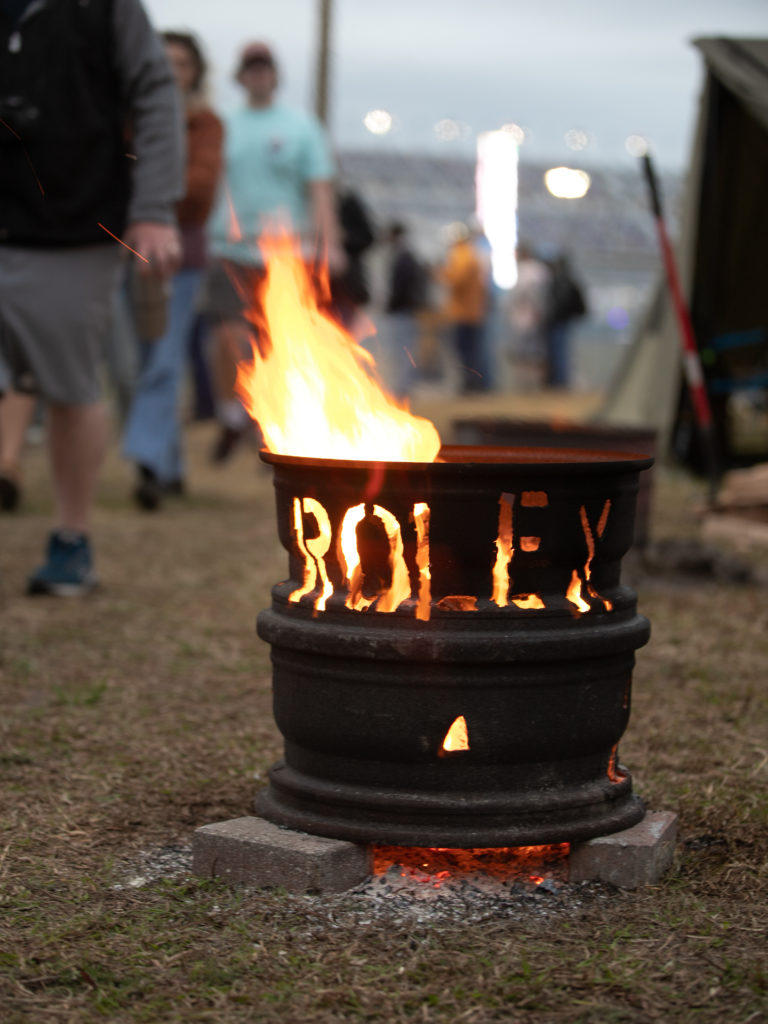
A lot of Daytona’s personalty comes from the fans and how they interact. Little bonfires from campgrounds on the edge of walkways make for warm social settings.
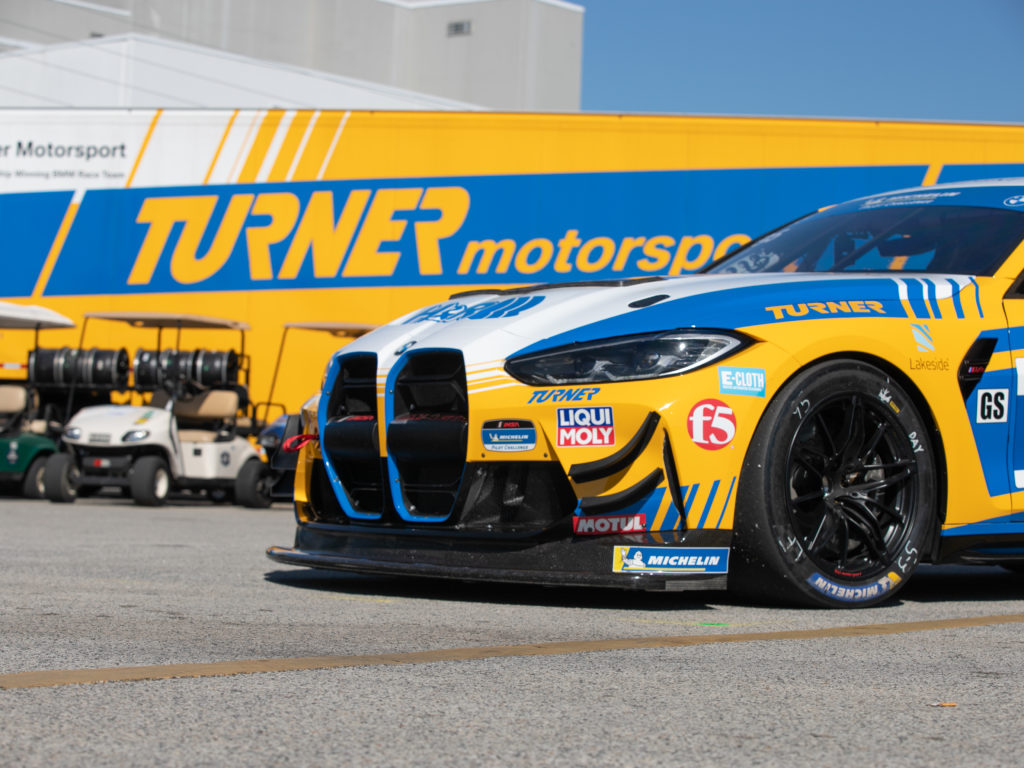
Try to consider how the background interacts with the subject. The pre-grid for Friday’s Michelin Pilot Challenge race was in front of Turner Motorsports’ trailer and their M4 GT4 just happened to pull up first. I framed the car’s dramatic nose with the team’s name behind it.
Keep an eye on the bigger picture
Capturing the action requires anticipation. Sure, it takes focus (yes, that was a camera pun) to capture your favorite car or driver, but keep your eyes peeled for incoming drama, too.
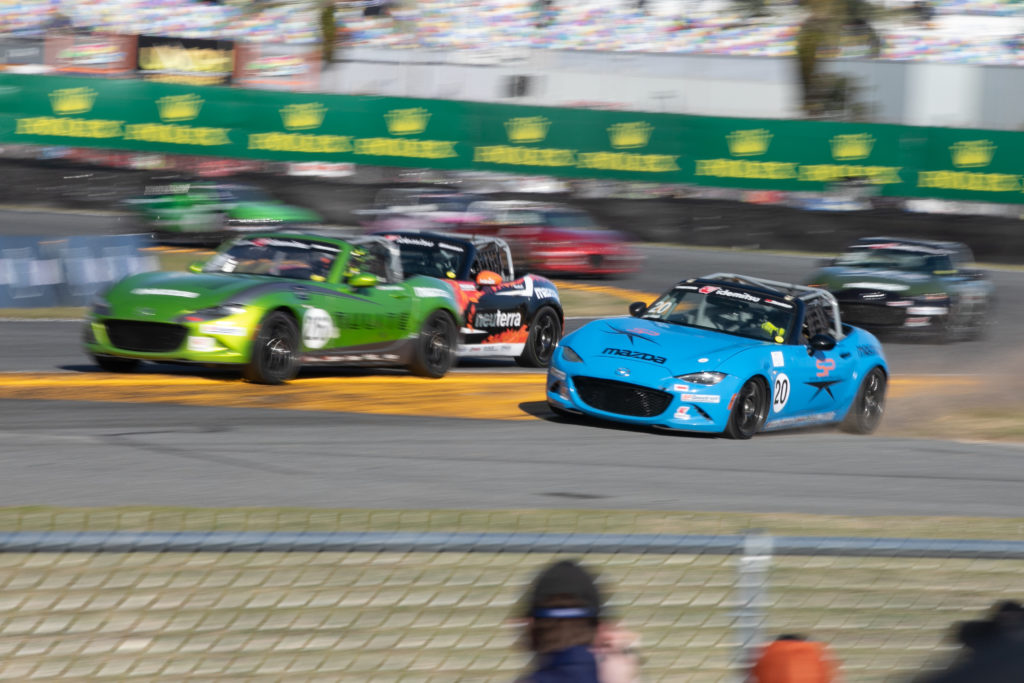
The Mazda MX-5 Cup race had no shortage of excitement. Keep your eyes up between shots—if a car is off the racing line, there’s a greater chance for drama. I noticed the blue MX-5 getting aggressive earlier in the corner, and sure enough, the driver’s decisions led to an interesting shot.
Combating the fence
Some folks (Neveu included) encourage shooting through the fence because it adds visual interest. Plenty of people get great shots through the chain-link, but I haven’t been all that successful trying this. If you’re like me, don’t worry, there are alternatives, including a household step ladder.
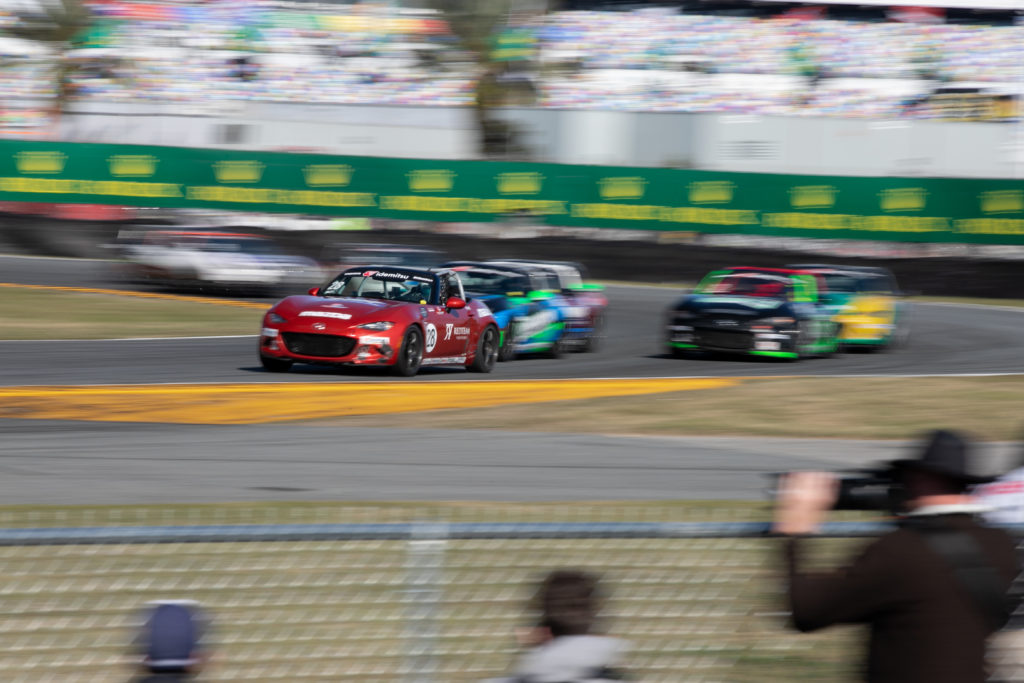
It’s ok to incorporate the foreground if you’re behind the fence. Don’t be concerned about people messing up your shots—they’re part of the setting too.
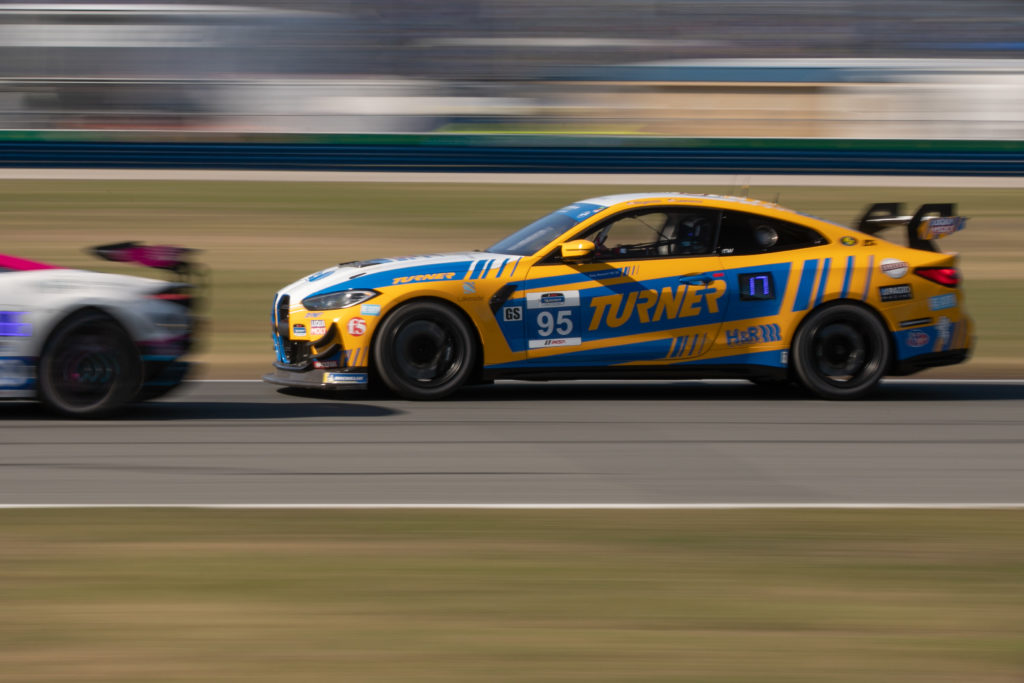
…but sometimes you want the racing to be the primary focus. A $25 two-step ladder will help clear the fence in Daytona’s infield.
Solo versus multiple cars
How you shoot cars in motion and how many you choose to capture inside a frame can help convey different things. Framing one car, up close, for example, documents the ride’s detail, livery, and its attitude at a given moment. A tight zoom or crop fosters a sense of urgency, while a broader one enables a sense of place.
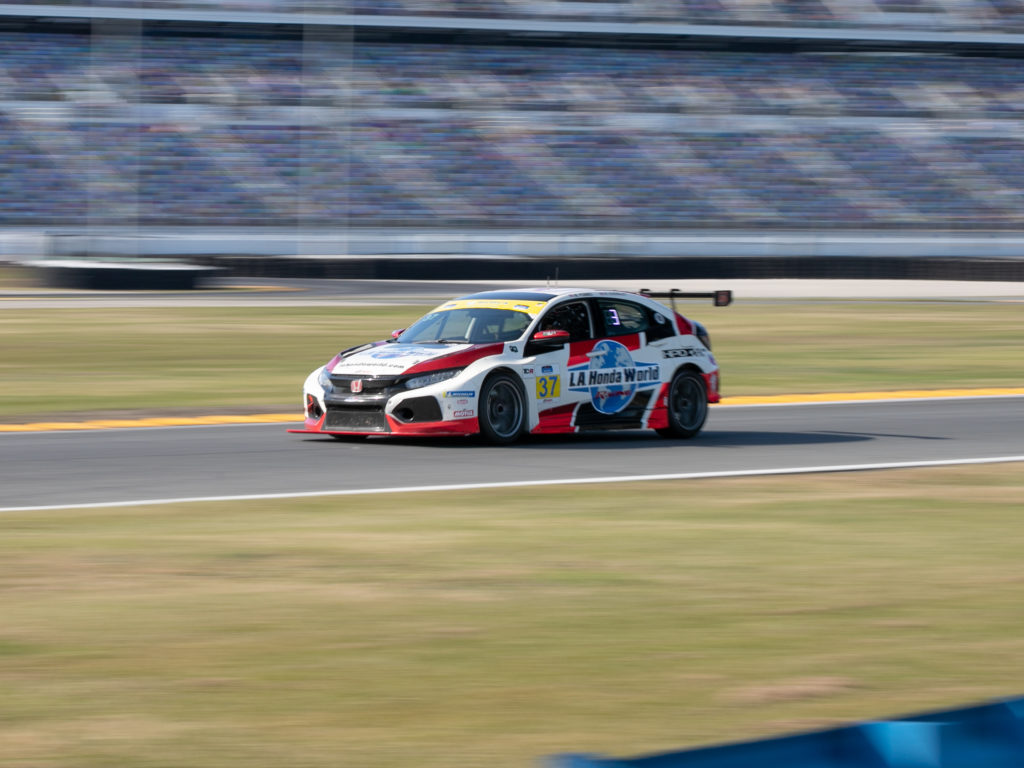
This is a relatively basic pan. It’s a bit too distant for the Honda to be very engaging on its own, yet it’s not broad enough to create a sense of place. It could be cropped after the fact to help achieve tighter objective. (Yes, it could also be a little more crisp; more on that in a moment.)
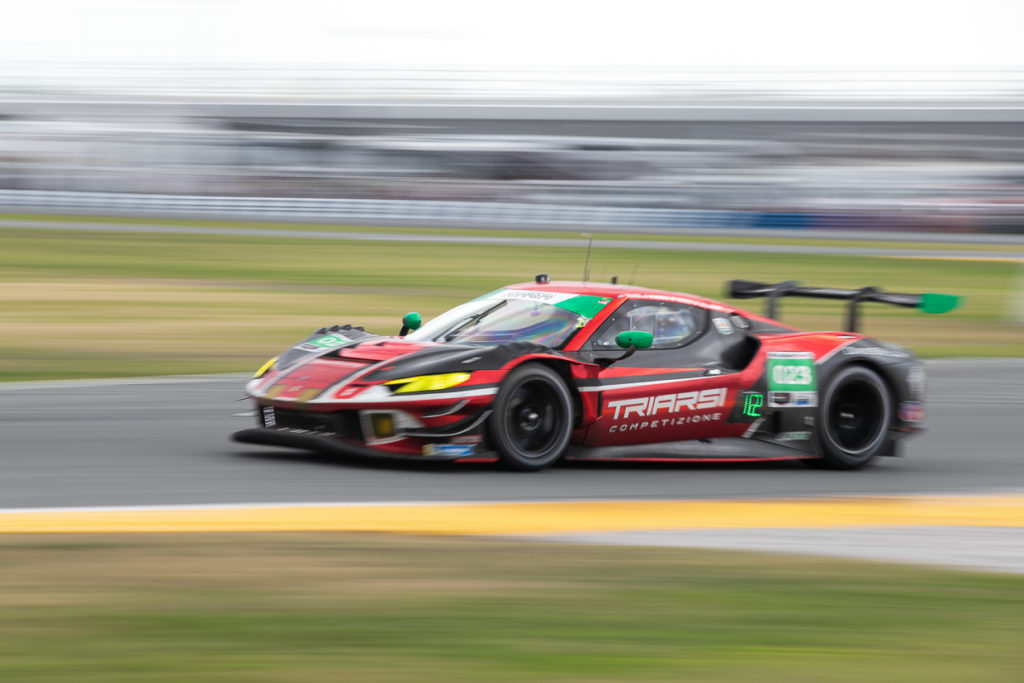
This Ferrari is a better example of a full-car shot. It fills the screen, creating a more engaging visual. The shutter speed is slower (at the edge of my talent in keeping up with the car) and conveys more motion.
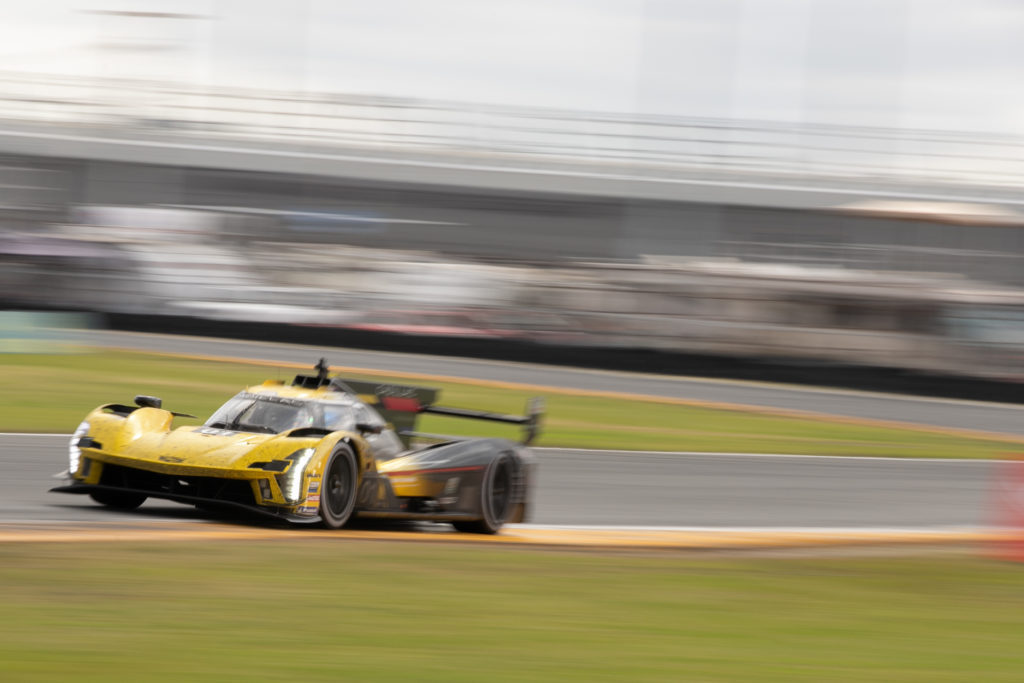
I cropped this GTP Cadillac photo to try to work in a sense of place. Don’t be afraid to use Lightroom or other tech to get what you want out of your photos—it’s your art, after all.
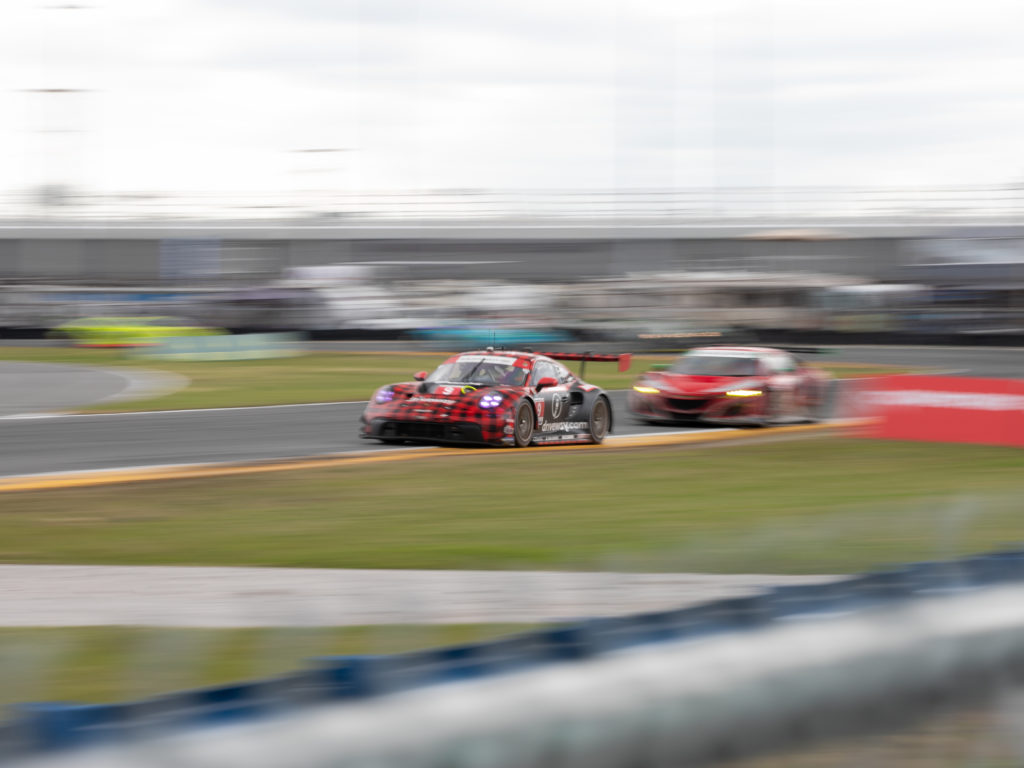
This was taken in the same corner as the Cadillac above. A little less zoom and another car fosters a feel that’s as much about the race as it is about the vehicles.
Slow down the shutter speed
When I was just getting started photographing cars, just successfully panning right was enough of a challenge. In fact, it still is. If you’ve ever tried shooting sporting clays, you know the concept of “swinging through” your target—that’s the opposite of what you want to do here. Basic panning shots need a lock on one part of the car to retain some sharpness while the background and elements further away from the focal point get blurry. Gradually reduce your shutter speed until you’re unable to attain a clear shot—you’ve now found your panning limit. The best I could manage was a few good shots at 1/20th of a second. I see pros nailing 1/6th shutter shots while shooting F1 cars. Needless to say, practice helps a lot. Steady and consistent motions win the day.
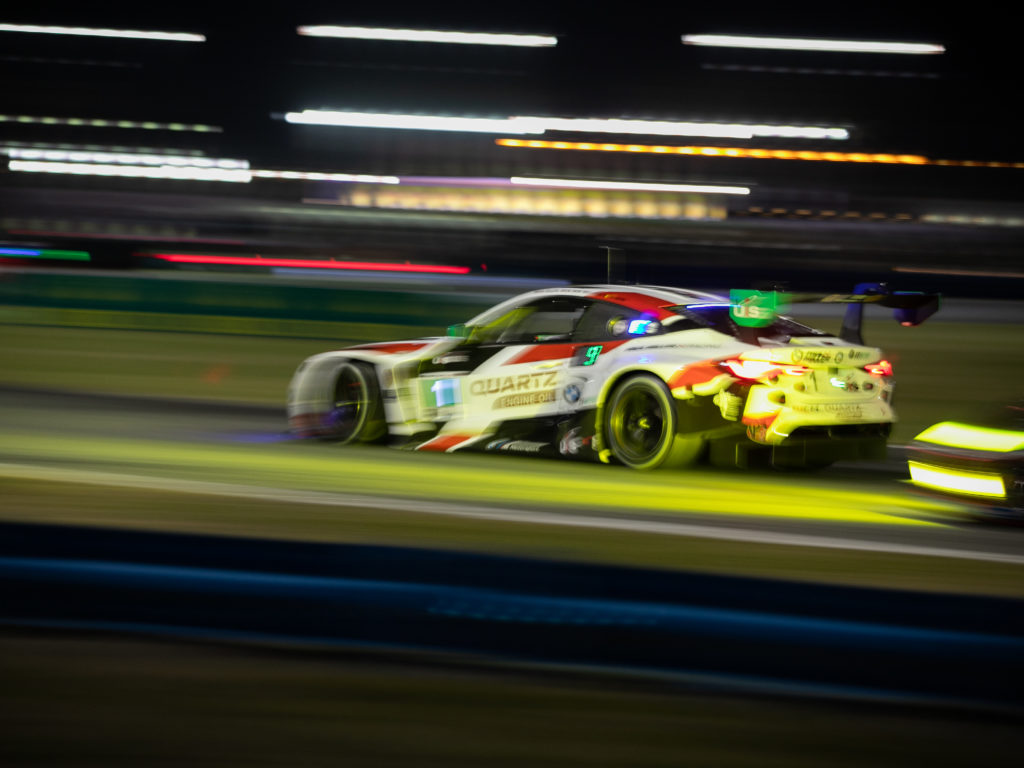
This is an example of falling a little short. Sure, it relays motion and drama, but the lack of a clear focal point means more “nice try” than “nice job.”
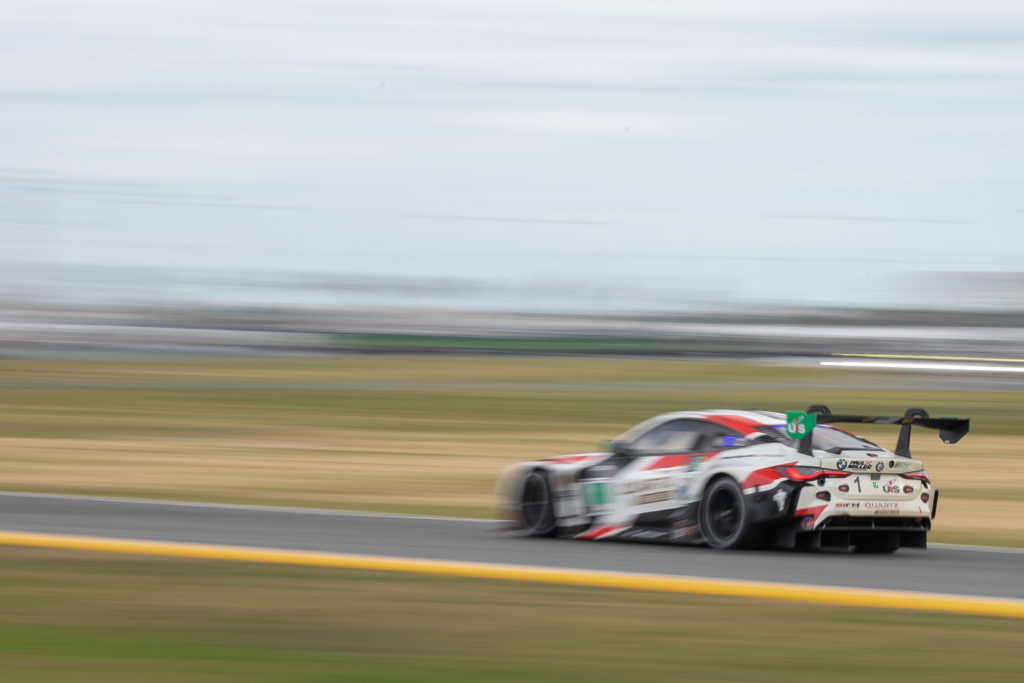
This isn’t perfect, but the focal point on the tail is a bit better and gets closer to the speed visual I like.
Night time is the right time (and so is the golden hour)
Shooting at night is by far my favorite part of Daytona 24 photography, with sunrise/sunset a close second. Finding that shutter speed/aperture/ISO balance at different locations and for different effect is a fun challenge, and you never know till you’ve taken the photo exactly how the light will paint the pixels. Shooting in full manual is part of the fun, but it’s actually helpful at night. Like performance driving, if the help isn’t fully off, the electronic nannies can kick in and make the camera do something other than what you want. Head on over to a section that offers interesting background light and hold that shutter down.
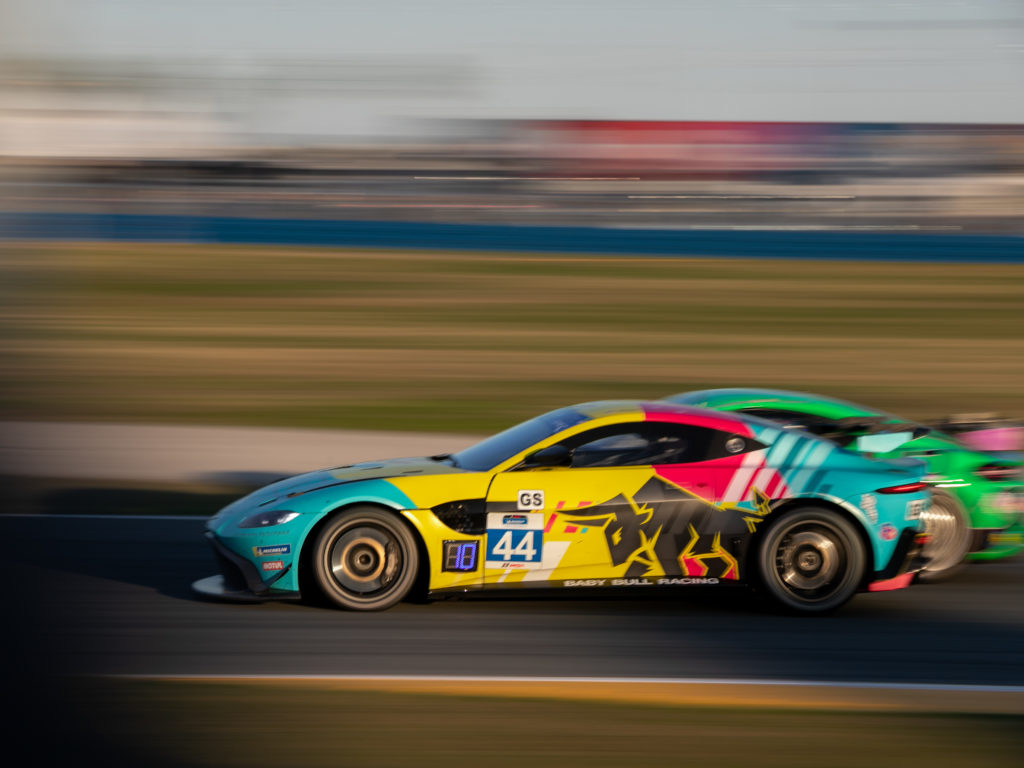
The 24 didn’t have a good sunset this year, but the Michelin Challenge support race wasn’t bad.
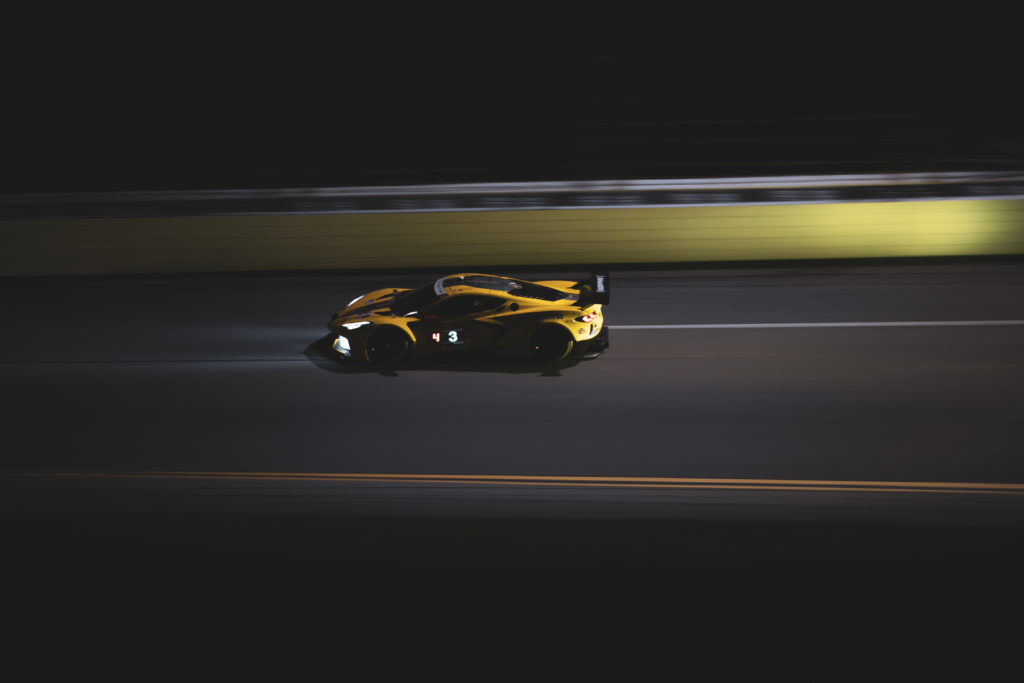
I got lucky with the trailing car casting yellow light on the yellow C8.R Corvette on the banking.
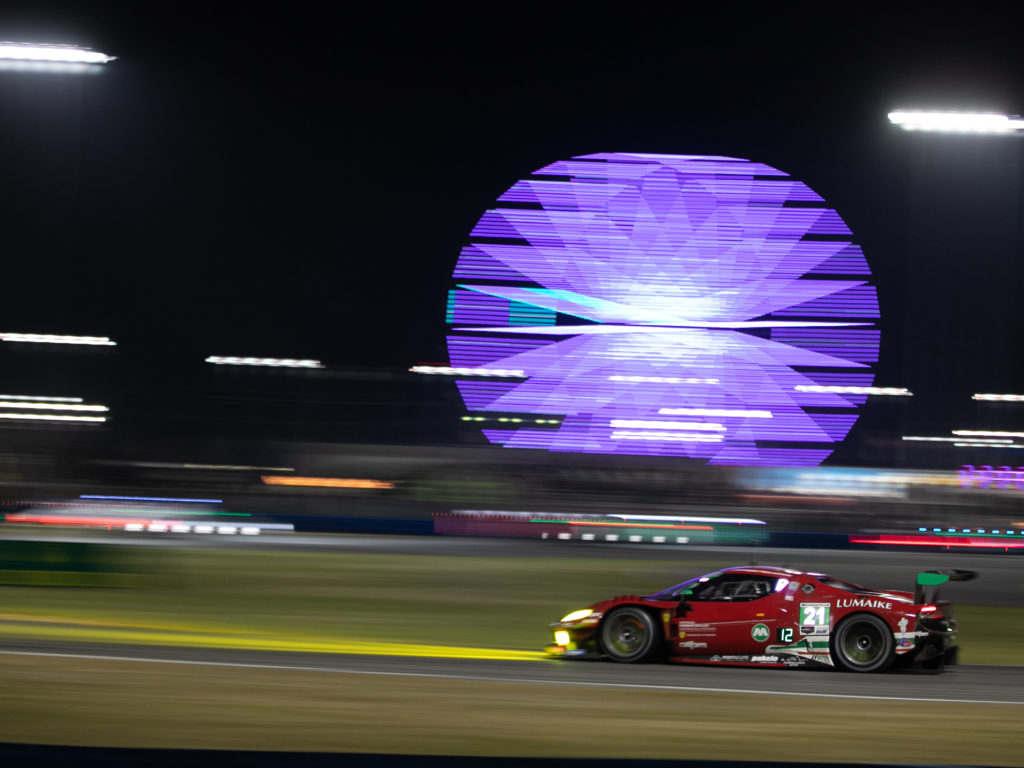
The obligatory Daytona Ferris wheel shot…
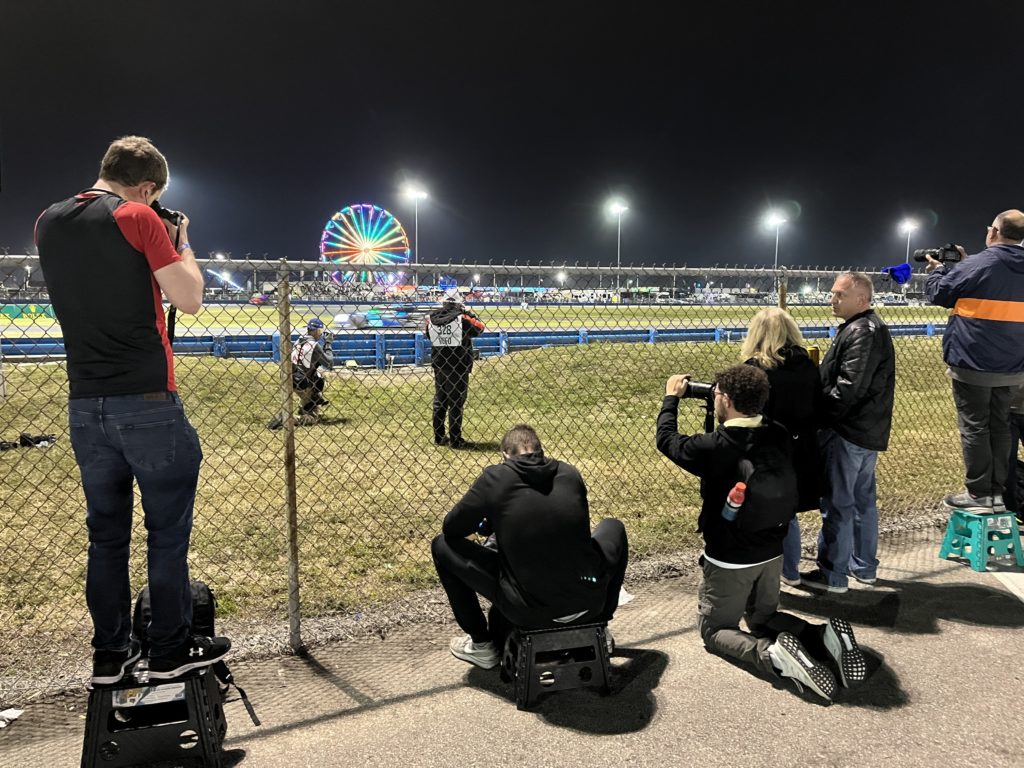
…and everyone trying to get their best version of it.
None of these are going to make Neveu feel like he needs to send me on a photo shoot, but I had fun and my friends enjoyed my Instagram check-ins from the track. If you’re a casual photographer and a racing fan, grab a ticket to an event like the Daytona 24 and start playing with different ways to capture your racing heroes. You’ll get addicted to trying to capture that perfect shot while hanging out with your friends. Life behind the fence has its merits.

